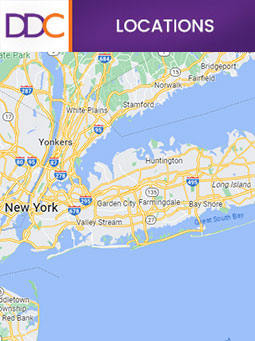Doctors Blogs by Digestive Disease Care Serving New York Community
Board-certified gastroenterologists at Digestive Disease Care share information on a variety of health conditions, disease prevention, and our services and programs. Read our doctor’s blogs to stay up-to-date. For more information, contact us today or schedule an appointment online. We have convenient locations to serve you in Babylon NY, East Setauket NY, Forest Hills NY, Jericho NY, Lake Success NY, Melville NY, Mineola NY, Massapequa NY, New Hyde Park NY and Riverhead NY.
Abdominal Pain: Causes, Symptoms, and When to See a Gastroenterologist
Abdominal pain is one of the most common reasons people visit a doctor. From mild cramping to sharp, intense discomfort, stomach pain can interrupt your life and sometimes signal something more serious.
Why am I always bloated? Top causes, treatments & when to see a GI doctor
Struggling with constant bloating? Expert GI doctors at Digestive Disease Care explain the top causes (IBS, SIBO, food intolerances), evidence-based treatments, and when to seek help.
Colon and rectal cancer cases are going up among people younger than 50, researchers say
The median age for colon and rectal cancer is going down. In this CNN Health brief, learn what could be causing an increase in colon and rectal cancer cases among adults under the age of 50.
The Best Tips for Good Digestive Health
Mar 11th, 2022
The digestive system breaks down the foods we eat into nutrients that power the body. Neglecting your digestive health can leave you feeling sluggish and with digestion complications.
How Stress Affects Digestion
Apr 11th, 2022
There’s a reason the digestive system is often referred to as the second brain in the body! This is because the gut has a system filled with neurotransmitters, even more so than the brain’s central nervous system.
April is IBS Awareness Month by Digestive Disease Care
Apr 12th, 2022
April was first designated as IBS Awareness Month in 1997, and ‘Don’t Suffer In Silence’ is a common theme used in this awareness campaign. While everyone poops, most people are uncomfortable talking about their bowel functions.
What is Celiac Disease?
May 4th, 2022
Celiac disease is a chronic digestive and autoimmune disorder causing the immune system to attack the small intestine when reacting to the protein found in wheat, barley, and rye.
Importance of Colonoscopy Q&A
Aug 23rd, 2022
A colonoscopy is a procedure that examines all of your large intestine. A thin flexible tube with a light and camera attached, called a colonoscope, is used to identify any issues like ulcers, inflamed tissues, polyps, or even colorectal cancer.
What are the Symptoms of IBS?
Nov 9th, 2022
Our care team specializes in identifying, diagnosing, and managing digestive disorders, like IBS. We’ve curated this guide to help you better understand IBS and the signs and symptoms that could indicate you have this common condition.
Home Remedies for Constipation
Dec 6th, 2022
Constipation develops for many reasons, including not being hydrated, changes in your diet, age-related changes, and taking certain medications.
Avoid These Foods if You Have Diverticulitis by Digestive Disease Care (DDC)
Jan 12th, 2023
Many years ago, doctors believed eating certain foods, like seeds, nuts, and corn, could trigger inflammation in the diverticula and trigger acute diverticulitis.
Do You Have Any of These Telltale Symptoms of a Liver Problem?
Feb 10th, 2023
Your liver is an essential organ that does many important things to help keep you healthy. It filters out toxins and poisons, helps with metabolism and converting food into energy, and converts key nutrients into important body chemicals.
Screening for Colorectal Cancer is Essential and Nothing to Fear
Mar 7th, 2023
There are many types of colorectal screenings, and painless, minimally invasive colonoscopies offer the best protection against colorectal cancers.
What’s the Difference Between Ulcerative Colitis and Crohn’s Disease?
Apr 3rd, 2023
Are you living with frustrating gastrointestinal symptoms, like abdominal pain, weight loss, and diarrhea? You could have ulcerative colitis (UC) or Crohn’s disease.
Gastro Fast Trak: Same-Day Gastroenterology Appointments in Queens, Nassau, and Suffolk
Jan 20th, 2024
When it comes to your health, waiting is not an option. At Digestive Disease Care, we understand that gastrointestinal issues can arise unexpectedly and require immediate attention.





